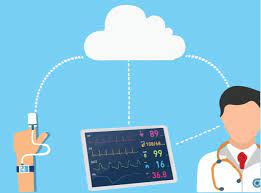Chronic diseases like diabetes, hypertension, and heart disease are leading health challenges, affecting millions globally. But as CoachCare remote patient monitoring continues to rise, the management of such conditions is undergoing a technological transformation. With wearable devices, mobile sensors, and advanced tracking tools at the forefront, RPM is creating a seamless care system that bridges patients and healthcare providers like never before.
The Revolution of RPM in Chronic Care
Remote patient monitoring empowers patients by allowing real-time health tracking, with an impressive impact on chronic disease management. Statistics highlight that 88% of patients using RPM feel more in control of their condition. This technology enables doctors to monitor vital signs, detect early warning signs, and adjust treatments remotely based on data gathered from wearable devices such as glucose monitors and smartwatches.
Research shows that patients who use RPM experience a 38% reduction in hospital readmissions, as continuous monitoring flags potential issues before they become emergencies. Additionally, RPM saves valuable time for patients and healthcare providers, improving overall efficiency in care delivery.
Benefits That Go Beyond the Numbers
The benefits of RPM extend beyond just improving clinical outcomes. Patients with chronic conditions, especially those in rural or underserved areas, now have wider access to care. This technology eliminates the barriers of geography and helps people receive timely medical interventions without traveling to clinics or hospitals.
Cost-efficiency is another major advantage. Studies have shown that healthcare systems can save an average of $300 per patient annually by adopting RPM solutions for chronic diseases. These savings make RPM a sustainable choice for both medical institutions and individuals.
What the Future Holds for RPM
Remote patient monitoring is projected to grow by over 12% annually through 2028, becoming even more integrated into chronic disease management systems. With advancements in artificial intelligence and 5G connectivity, RPM tools will become smarter and more widespread, improving personalized care and boosting patient engagement like never before.
Final Thoughts
The rise of remote patient monitoring in chronic disease management is reshaping the healthcare landscape. By enabling real-time tracking, improving treatment outcomes, and reducing costs, RPM offers an essential tool for modern medicine. It represents the future of patient-centric care and a dynamic shift toward accessible, proactive management of chronic conditions.



